Your cart is currently empty!
The Witchy Housewife
Metaphysical Shop & Library
The Witchy Housewife’s
Witchipedia
Table of Contents
The Energy Body
Platon’s Theory of the Soul
The Root Chakra
The Sacral Chakra
The Solar Plexus Chakra
The Heart Chakra
The Throat Chakra
The Third Eye Chakra
The Crown Chakra
The Energy Body
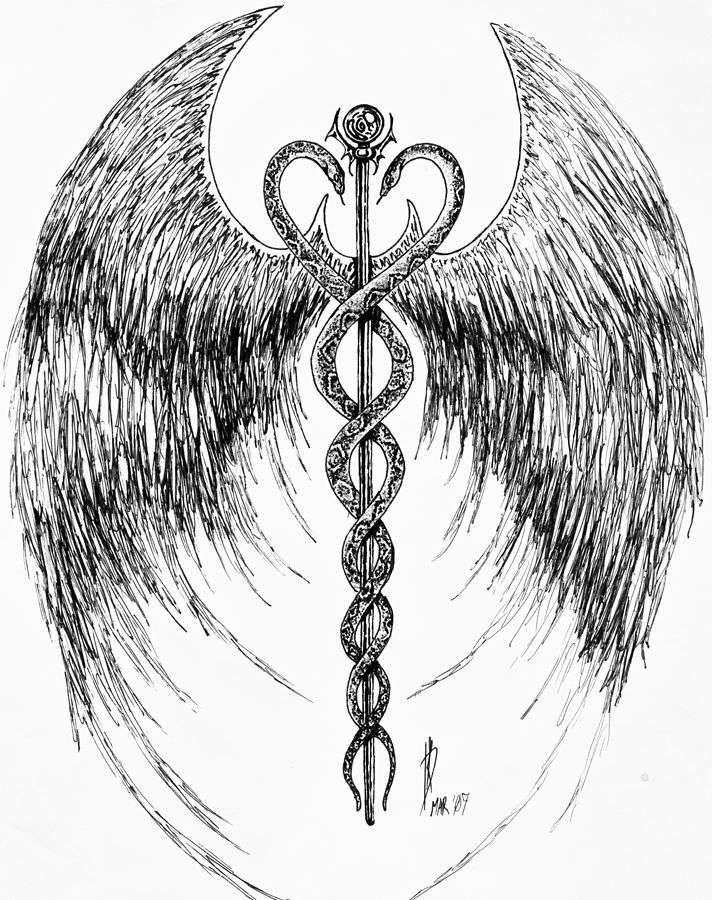
The energy body – or soma energeias (σώμα ενέργειας), as I may refer to it when discussing my beliefs specifically – is the aitheric vessel which surrounds and permeates our physical incarnation(s) and either connects us to or contains our psykhe. It is my belief that this energy body is made up of the Kosmic energeia we refer to as aither. In this sense, it is pure lifeforce.
The chakras (चक्र; wheel, circle) are swirling centers of energy connected by nadis *(*नाड़ी; tube, vessel), or currents of energy which allow travel between the chakras. The chakra system is prescriptive, not descriptive; it’s more of a blueprint than a diagram, crafted in order to more easily work with the energy body. As such, there are many chakra systems out there, and no one system is necessarily better than any other. The system that I choose to work with – and the system most people are familiar with – is the seven-chakra system from Vedic teachings, albeit, with a Hellenistic slant.
In older Vedic teachings, the symbols, elements, and other correspondences you may come across as associated with the chakras were meant to assist in a visualization process known as nyasa (न्यास; deposit), wherein mantras (मन्त्र; to think), or divine recitations, were chanted and “installed” at specific points on the body with the intention of invoking the gods into them. Interestingly, similar ideas regarding the use of focal points to work with the energy body in matters of growth or healing can be found by other names across other cultural texts, including allusions to such concepts in the works of Platon, Pythagoras, and Hermes Trismegistos.
The Vedic chakra system also brings to us a method of spiritual awakening by way of kundalini (कुण्डलिनी; coiled snake), feminine Kosmic energy – or Shakti (शक्ति; power, energy, ability) – visualized as a coiled serpent at the base of the spine. Though it is believed that kundalini awakening – when this energy is roused and drawn up toward the crown – may occur on its own time rather than at your command, nurturing the nervous system, practicing breathwork, and developing a practice in Kundalini yoga (a combination of Bhakti yoga, Shakti yoga, and Raja yoga) can help to encourage the process along. I myself have also found spiritual momentum in yoga nidra, which has been integral to my realmwalking practice as of late. This is a topic, however, that deserves its own article.
As discovered in westernized New Age practices, the chakra system is also wonderful for analyzing the energy body in order to address internal (and sometimes external) blockages. The natural flow of energy may be described as thus: Ouranic (Heavenly) energy flows in through the crown chakra, Gaian (Earthly) energy flows in through the root chakra, and these two streams of energy gather in the middle at the heart chakra. Similarly, ambient energy is thought to flow in from behind us, mingle with our own energetic signature, then flow out through the front transformed. In some occult teachings, the hands have their own flow more akin to a battery, with the left hand more receptive to energy and the right hand more projective of energy. A common method for checking the flow and status of these points in the body is by taking a pendulum physically to them or to a visual representation (such as over an image or effigy) and analyzing the movements that develop. Movement should be at a steady, clockwise pace, with too little movement, too much movement indicating different potential issues, or counterclockwise movement all being indicative of an energetic issue.
You can read more on the energy body here.

Platon’s Theory of the Soul
In Platon’s Theory of the Soul, the spiritual essence of an individual being is called the psykhe (ψῡχή) – the incorporeal and eternal essence which occupies the physical body and persists thereafter its physical death. It is our source of life, mind, and moral values and is largely responsible for how we behave. It may be likened, of course, to the concept of the soul, though this is a point of contention for many academics, and in Platon’s theory, it may be broken down into three distinct facets: the epithymetikon, the thymoeides, and the logistikon. When each of these facets is adequately fulfilling its function, the system is considered to be just. When they are able to do so without interfering with one another’s functions, the system is considered to be temperate. To tick both boxes, of course, is to be spiritually balanced.
The Epithymetikon
Keywords: Desire & Primality | Realm: Gaian Realms | Domain: Root & Sackral Chakras | Vedic Kosha: Physical Sheath | Vedic Sarira: Gross Body | Qabalistic Triad: Astral Triad | New Age Prescription: Body
The epithymetikon (ἐπιθυμητικόν) is the appetite of the psykhe, which is said to be located in the stomach and is responsible for seeking and producing pleasure. Analogically, the epithymetikon may be considered the internal common man.
In Vedic philosophies, the epithymetikon may draw parallels to the concept of the gross body, which refers to the physical mortal body which feature birth, the physical waking state, aging, and death and is shaped by one’s past life karma. This is connected to the physical sheath, the annamaya kosha, which is nourished by nutrition, exercise, and flexibility practices to honor the physical body.
The Thymoeides
Keywords: Motivation & Willpower | Realm: Astral Realms | Domain: Solar Plexus, Heart, & Throat Chakras | Vedic Kosha: Vital, Mental, & Intellectual Sheaths | Vedic Sarira: Subtle Body | Qabalistic Triad: Moral Triad | New Age Prescription: Mind
The thymoeides (θυμοειδές) is the spirit of the psykhe, which is said to be located in the chest and is responsible for receiving guidance from the logistikon while ferociously defending the psykhe and vessel from external invasion and internal disorder. Analogically, the thymoeides may be considered the internal military.
In Vedic philosophies, the thyomeides may draw parallels to the concept of the subtle body (or sukshma sarira), which refers to the the mind and the vital energies which keep the body alive and transmigrate the soul from the body upon bodily death. It is primarily composed of five subtle elements: The five organs of perception (eyes, ears, skin, tongue, nose; sravanadipanchakam), the five organs of action (speech, hands, legs, anus, genitals; vagadipanchakam), the five-fold vital breath (respiration/prana, waste disposal/apana, blood circulation/vyana, excretion of minor fluids/udana, digestion/samana; pranapanchakam), manas (the emotional mind and internal perceptions), and buddhi (the intellect/discriminating wisdom). In some traditions, the subtle body is eight-fold and also includes avidya (super-imposition/adhyasa), kama (desire), and karma (action of the nature of dharma and adharma). The dream state is considered to be a distinct state of the subtle body.
This is connected to the vital sheath (pranamaya kosha), the mental sheath (manomaya kosha), and the intellectual sheath (vijnanamaya kosha). The vital sheath is made up of prana or life force energy. This sheath is responsible for the functioning of the physical body and is tied to breath, just like the psykhe sometimes is in Hellenic theory. It may be nourished through breathwork and awareness of breath in daily life. The mental sheath is made up of our thoughts, emotions, and mental processes. It plays a crucial role in our perception of the world. Negative thoughts, of course, will affect it negatively, while mindful meditation, affirmation work, and a mental diet nourish the mental sheath. The intellectual sheath is made up of our knowledge, wisdom, and discernment. It is crucial for us to develop true understanding. To nourish it, you can study texts and materials, actively engage with and contemplate on them, and ponder philosophy.
The Logistikon
Keywords: Wisdom & Intellect | Realm: Outer Realms | Domain: Third Eye & Crown Chakras | Vedic Kosha: Blissful Sheath | Vedic Sarira: Causal Body | Qabalistic Triad: Supernal Triad | New Age Prescription: Spirit
The logistikon (λογιστικόν) is the rationality of the psykhe, which is said to be located in the head and is responsible for ruling the psykhe through the desire to learn, understand, and expand the breadth of wisdom. Analogically, the logistikon may be considered the internal leader.
In Vedic philosophies, the logistikon may draw parallels to the concept of the causal body (karana sarira), which is the seed or root cause of the other two bodies. It is the first notion of that energy, characterized by being dark, empty, beginningless, and ignorant. This may draw parallels to the notion of Khaos, a point of endless potential. It is thought that it may be impressed upon by physical experiences, but the state of the causal body is one of no space or time. This is connected to the blissful sheath (anandamaya kosha) which contains spiritual bliss and fulfillment and connects us to the greater reality and the Divine. It can be nourished by meditation, spiritual practices of contentment, and acts of compassion.
Orphic Metempsykhosis
After death, the psykhe is said to go through a process of reincarnation called metempsykhosis (μετεμψύχωσις). In life, the psykhe and body are united in an unequally binding spiritual contract. While the psykhe yearns for freedom, the body holds it in place. When the body dies, it proceeds to the realm of Haides, undergoes judgment, drinks from the river Lethe, and proceeds into their new life based on that judgment. Beyond Orpheus and Platon, this cycle of death and rebirth has also been supported by Pythagoras who claimed recollection of his own past lives. In order to escape this cycle and achieve a higher level of liberation, Orpheus advises that we live our lives in the interest of piety and self-purification. I also tend to think that remembering our past lives, our true selves, and our calling plays a crucial role in breaking this cycle.

The Root Chakra
Vedic Name: Muladhara (मूलाधार) | Hellenistic Name: Hieron Osteon (ἱερόν ὀστέον) | Bija Mantra: LAM (लं; Hellenistic: Λαμ) | Focal Point: Base of the Spine | Vedic Installation: Ganesh & Brahma | Theos: Gaia & Kosmos | Gland: Adrenal Glands | Element: Earth | Platonic Solid: Cube | Color: Red | Frequency: 369 Hz | Petal Number: 4
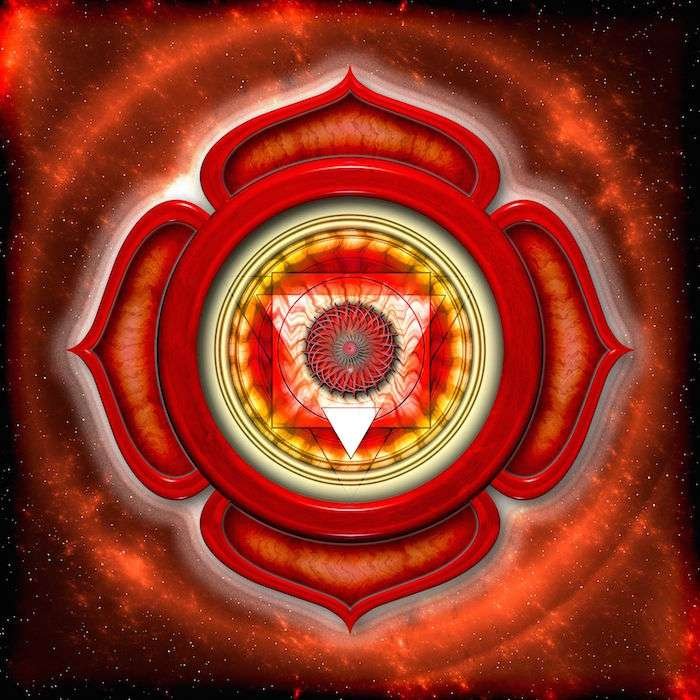
In the westernized chakra system, the root chakra is associated with grounding, confidence, and base instinct. By this philosophy, a healthy root chakra promotes a good sense of security, stability, and support. With our base needs taken care of, we feel free to pursue higher needs and interests. Associated the installation of Ganesh (Vedic God of Beginnings) and Brahma (Vedic God of Creation), I find the energies of Gaia and the Kosmos a suitable Hellenistic parallel for the stabilization of this chakra. Residing in the domain of the epithymetikon, this chakra is the seat of our more primitive consciousness and our energy body’s physical support.
When energetically underactive, the predominate feeling produced by the root chakra is fear. The result is stagnation, chaos, and a constant state of fight or flight. On the other hand, if overactive, the predominate feeling instead becomes that of an adrenaline junkie. This can commonly be seen among those with a high amount of material possessions, who can appear egocentric and coercive as they continue seeking higher thrills in the name of a fulfillment that will never come.
When working to heal and stabilize this chakra, physical support lies in nurturing the health of the adrenal glands. Energetically, grounding and time in nature is key. In human development, some theorize that support for root chakra energies happens between birth and one year of age. This would be done by ensuring physical needs of the child are always met, offering consistent opportunities to bond, nurturing connection through physical touch, and encouraging tactile play. If these needs were not met for you during this stage in development, it would be a good idea to address how this may be affecting your life and inhibiting your growth at present.

The Sacral Chakra
Vedic Name: Muladhara (मूलाधार) | Hellenistic Name: Gonades (γονάδες) | Bija Mantra: VAM (वं; Hellenistic: Βαμ) | Focal Point: The Navel | Vedic Installation: Vishnu | Theos: Eros | Gland: Reproductive Glands | Element: Water | Platonic Solid: Icosahedron | Color: Orange | Frequency: 417 Hz | Petal Number: 6
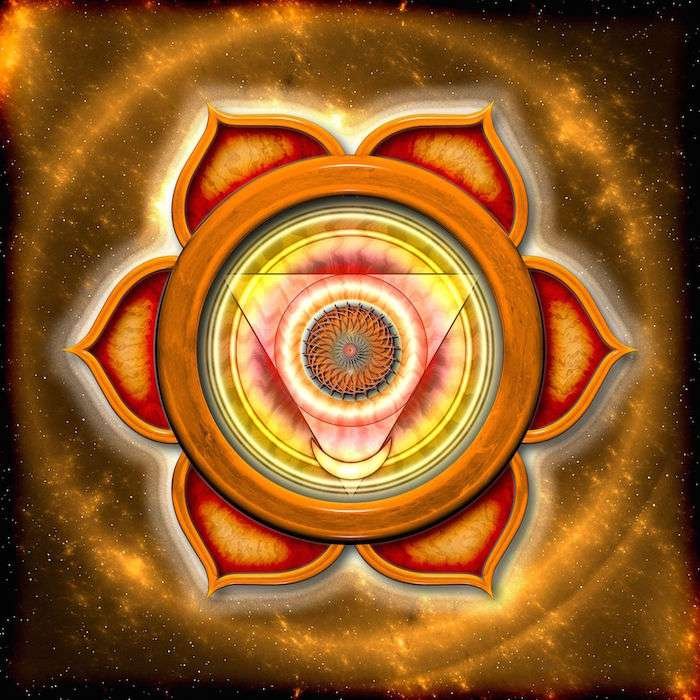
In the westernized chakra system, the sacral chakra is associated with sexual desire, passion, and creativity. By this philosophy, a healthy sacral chakra promotes an awareness of beauty in all places, motivation to create new things, and a healthy relationship with sex and romance. Associated with the installation of Vishnu (Vedic God of Preservation), I find the energy of Eros a suitable Hellenistic parallel for the stabilization of this chakra. Residing in the domain of the epithymetikon, this chakra is the point at which our physical body is connected with our psykhe.
When energetically underactive, the predominate feeling produced by the sacral chakra is apathy. The result is dampened motivation, creative blocks, and a lack of libido. On the other hand, if overactive, the predominate feeling instead becomes obsession. Hypersexuality is also a common issue for those with overactive sacral energy.
When working to heal and stabilize this chakra, physical support lies in nurturing the health of the reproductive glands. Energetically, sensual, creative, and tactile experiences are key. In human development, some theorize that support for sacral chakra energies happens between six months to 18 months of age. This would be done by introducing independence in loving and safe ways, encouraging exploration of the world through the physical senses, and nurturing the healthy expression of emotions. If these needs were not met for you during this stage in development, it would be a good idea to address how this may be affecting your life and inhibiting your growth at present.

The Solar Plexus Chakra
Vedic Name: Manipura (मणिपुर) | Hellenistic Name: Gaster (γᾰστήρ) | Bija Mantra: RAM (रं; Hellenistic: Ρᾱμ) | Focal Point: The Solar Plexus | Vedic Installation: Rudra | Theos: Zeus | Gland: Pancreas Gland | Element: Fire | Platonic Solid: Tetrahedron | Color: Yellow | Frequency: 528 Hz | Petal Number: 10
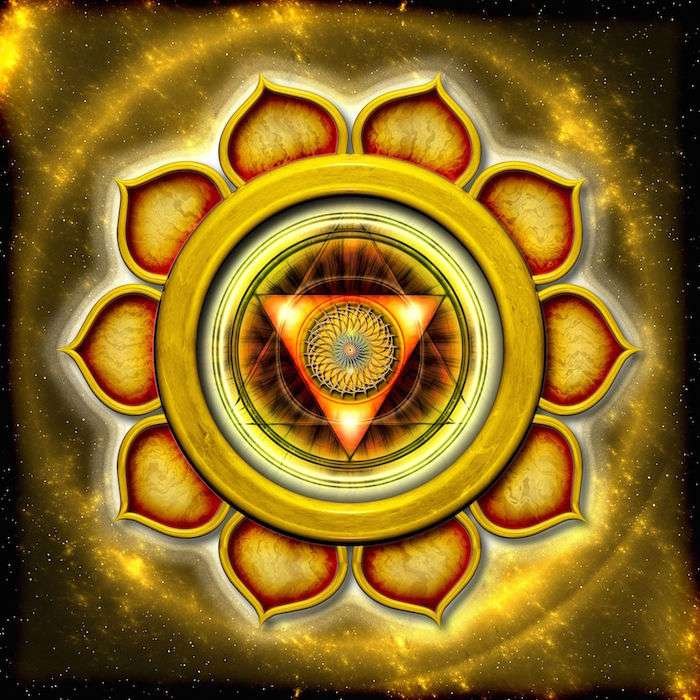
In the westernized chakra system, the solar plexus chakra is associated with self-esteem, ambition, and willpower. By this philosophy, a healthy solar plexus chakra promotes healthy confidence in oneself, empowerment to move towards one’s goals, and capability to stand on one’s own two feet. Associated with the installation of Rudra (Vedic God of Storms), I find the energy of Zeus a suitable Hellenistic parallel for the stabilization of this chakra. Residing in the domain of the thymoeides, this chakra houses not only the physical appetite, but appetite of the soul, as well; this is where the basis of our internal “spark” is formed.
When energetically underactive, the predominate feeling produced by the solar plexus chakra is uncertainty. The result is an inability to think, act, or develop without confirmation, validation, or affirmation from someone placed above oneself. Many of those with more of a follower personality type (a tendency to shapeshift to match whatever group of people they are most often spending time with) struggle with this chakra. On the other hand, if overactive, the predominate feeling instead becomes hubris. Overactive solar plexus energy can make one view everyone around them as beneath them, making them quite unpleasant to be around.
When working to heal and stabilize this chakra, physical support lies in nurturing the health of the pancreas gland. Energetically, martial arts, motivational literature, and making an effort to face fears is key. In human development, some theorize that support for solar plexus chakra energies happens between 18 months to three years of age. This would be done by building the child’s self-esteem, offering choice and independence, and appropriate (and explained) discipline for inappropriate behaviors. If these needs were not met for you during this stage in development, it would be a good idea to address how this may be affecting your life and inhibiting your growth at present.

The Heart Chakra
Vedic Name: Anahata (अनाहत) | Hellenistic Name: Phrenes (φρένες) | Bija Mantra: YAM (यं; Hellenistic: Ιᾱμ) | Focal Point: Center of the Chest | Vedic Installation: Ishvara | Theos: Psykhe | Gland: Thymus Gland | Element: Water | Platonic Solid: Octahedron | Color: Green | Frequency: 639 Hz | Petal Number: 12
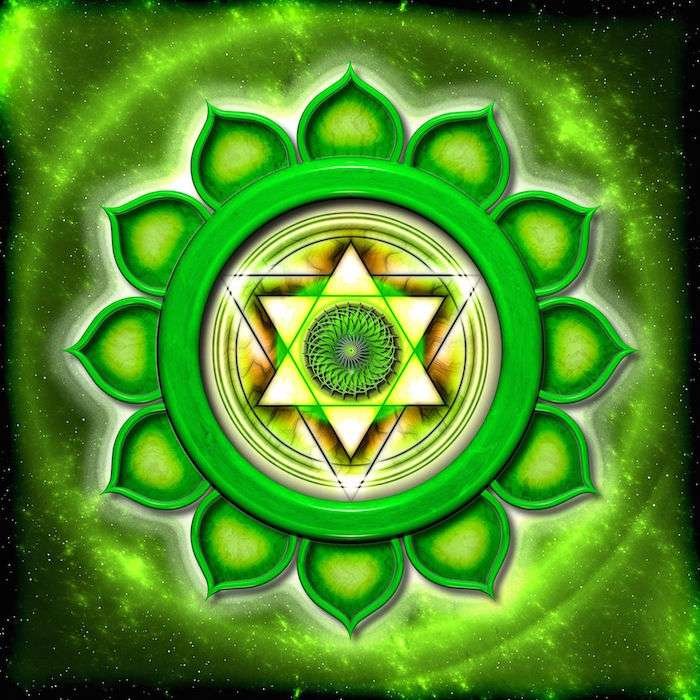
In the westernized chakra system, the heart chakra is associated with love, compassion, and emotional stability. By this philosophy, a healthy heart chakra promotes a sense of understanding and connection to the complexities of oneself and others, a desire to improve the world around us, and a level-headed approach to strong emotional responses. Associated with the installation of Ishvara (Vedic God Within Oneself), I find the energy of Psykhe a suitable Hellenistic parallel for the stabilization of this chakra. Residing in the domain of the thymoeides, this chakra is intimately tied to the breath and is thought to help us understand spiritual wisdom in a deep, profound, and often wordless way; it is also where the first wisps of our deeper inspirations may gestate.
When energetically underactive, the predominate feeling produced by the heart chakra is despair. The result is disconnection, a pessimistic outlook on life, and a heightened emotional response to things we may not personally understand. Many of the current issues in our modern society may reside here. On the other hand, if overactive, the predominate feeling instead becomes mania. You may also see this referred to as “toxic positivity” or notice this in people who lack discernment in the things they encourage.
When working to heal and stabilize this chakra, physical support lies in nurturing the health of the thymus gland. Energetically, being open to the reasoning and expressions of others, philosophizing at an emotional level, and meditating on stillness is key. In human development, some theorize that support for heart chakra energies happens between four to seven years of age. This would be done by encouraging and demonstrating healthy interpersonal relationships, establishing strong moral values in balance with compassion, and teaching the importance of forgiveness in balance with boundaries. If these needs were not met for you during this stage in development, it would be a good idea to address how this may be affecting your life and inhibiting your growth at present.

The Throat Chakra
Vedic Name: Vishuddha (विशुद्ध) | Hellenistic Name: Trakhelos (τράχηλος) | Bija Mantra: HAM (हं; Hellenistic: ῾Ᾱμ) | Focal Point: The Throat | Vedic Installation: Sadashiva | Theos: Themis | Gland: Thyroid Gland | Element: Aither/Sound | Platonic Solid: Dodecadron | Color: Blue | Frequency: 741 Hz | Petal Number: 16
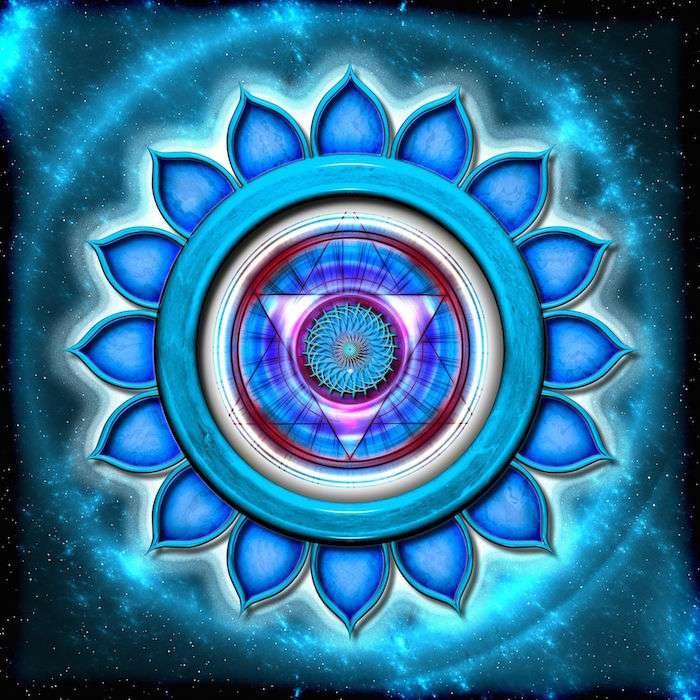
In the westernized chakra system, the throat chakra is associated with communication, trust, and authenticity. By this philosophy, a healthy throat chakra promotes a clear sense of self outside of the context of other people, the ability to speak one’s thoughts clearly and confidently, and a general sense of comfort in participating in societal life. Associated with the installation of Sadashiva (Vedic God of Ultimate Reality), I find the energy of Themis a suitable Hellenistic parallel for the stabilization of this chakra. Residing in the domain of the thymoeides, this chakra is the filter for those inspirations which have gestated, if authentic, to embed within the self.
When energetically underactive, the predominate feeling produced by the throat chakra is repression. The result is a feeling of imprisonment and an inability to comfortably share and connect with the world. One may feel alien in their own home. On the other hand, if overactive, the predominate feeling instead becomes lust for control. Every aspect of the self must be carefully curated, and everyone outside must abide or be conquered by the perfect world which has been crafted in one’s mind.
When working to heal and stabilize this chakra, physical support lies in nurturing the health of the thyroid gland. Energetically, externalizing your thoughts and feelings, remaining honest with yourself and others, and experiencing life both in private and in public as you authentically are (with all the flaws and inconsistencies that may come with it) is key. In human development, some theorize that support for throat chakra energies happens between eight to 12 years of age. This would be done by supporting matters of personal expression, keeping an open line of communication, and showing grace in the face of mistakes in return for honesty. If these needs were not met for you during this stage in development, it would be a good idea to address how this may be affecting your life and inhibiting your growth at present.

The Third Eye Chakra
Vedic Name: Ajna (आज्ञा) | Hellenistic Name: Enkephalos (ἐγκέφᾰλος) | Bija Mantra: AUM (उं; Hellenistic: Αυμ) | Focal Point: Between the Eyebrows | Vedic Installation: Ardhanarishvara | Theos: Hekate | Gland: Pineal Gland | Element: Aither/Light | Platonic Solid: Dodecahedron | Color: Indigo | Frequency: 852 Hz | Petal Number: 2
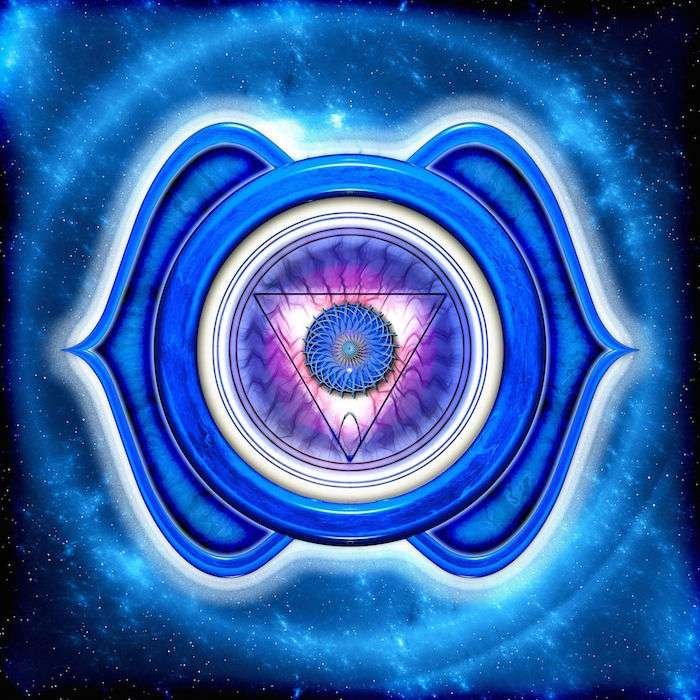
In the westernized chakra system, the third eye chakra is associated with knowledge, intuition, and perception. By this philosophy, a healthy third eye chakra promotes strengthened spiritual abilities, a developed bank of accumulated wisdom, and the air of a natural-born leader. Associated with the installation of Ardhanarishvara (Vedic God of Nonduality), I find the energy of Hekate a suitable Hellenistic parallel for the stabilization of this chakra. Residing in the domain of the logistikon, this chakra is the control center of the psykhe which subconsciously influences the thoughts and actions of the current physical incarnation through experiences from across lifetimes.
When energetically underactive, the predominate feeling produced by the third eye chakra is nihilism. The result is total apathy towards existence, excessively materialistic tendencies, and an inhibited ability to philosophize. On the other hand, if overactive, the predominate feeling instead becomes derealization. Life begins to feel ungrounded and dreamlike. Maladaptive daydreamers may find themselves having issues here.
When working to heal and stabilize this chakra, physical support lies in nurturing the health of the pineal gland. Energetically, trusting your intuition, regularly examining your beliefs and ideas, and engaging your subtle senses is key. In human development, some theorize that support for the third eye chakra energies happens during adolescence. This would be done by making the home into a safe place for the child to cultivate identity, beliefs, and mental independence. If these needs were not met for you during this stage in development, it would be a good idea to address how this may be affecting your life and inhibiting your growth at present.

The Crown Chakra
Vedic Name: Sahasrara (सहस्रार) | Hellenistic Name: Koryphe (κορυφή) | Bija Mantra: OM (ॐ; Hellenistic: Ωμ) | Focal Point: Top of the Head | Vedic Installation: Bhairava | Theos: Khaos | Gland: Pituitary Gland | Element: Aither/Thought | Platonic Solid: Dodecahedron | Color: Violet | Frequency: 963 Hz | Petal Number: 972
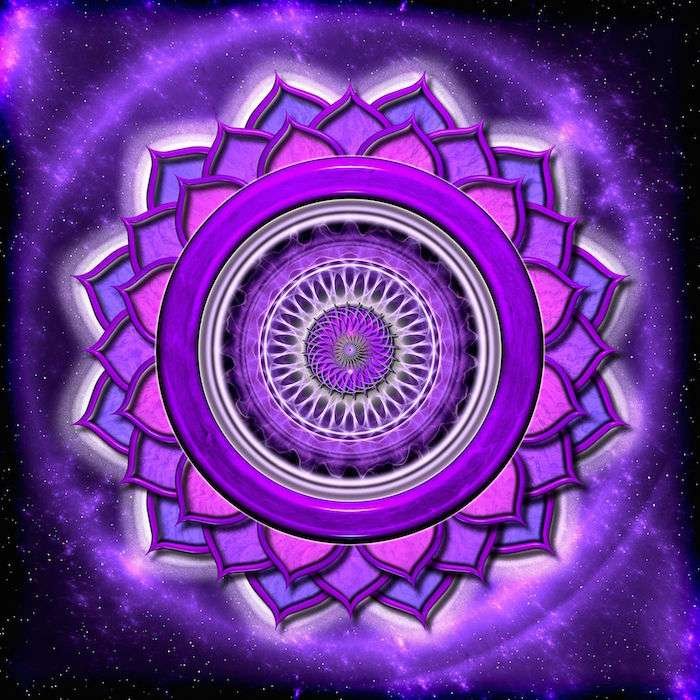
In the westernized chakra system, the crown chakra is associated with Divinity, spiritual liberation, and pure consciousness. By this philosophy, a healthy crown chakra promotes inner bliss, inner peace, and ultimate spiritual ascension. Associated with the installation of Bhairava (Vedic God of Spiritual Liberation), I find the energy of Khaos a suitable Hellenistic parallel for the stabilization of this chakra. Residing in the domain of the logistikon, this chakra connects us to the higher realms of the Divine.
When energetically underactive, the predominate feeling produced by the crown chakra is disinterest. The result is depersonalization and total apathy to all things. On the other hand, if overactive, the predominate feeling instead becomes a different flavor of nihilism – one which believes that nothing matters because this is “not true reality”. One risks becoming too open and too complacent within their lives for the worst. Further, compassion for matters of the physical and the mental quickly begins to subside.
When working to heal and stabilize this chakra, physical support lies in nurturing the health of the pituitary gland. Energetically, making an effort to yourself in others and in the world around you, developing your personal spiritual path and understanding of the Kosmos, and a consistent practice of deep meditation is key. In human development, some theorize that support for the crown chakra energies happens during early adulthood and beyond. This would be done by engaging the sense of curiosity and pursuing higher knowledge in all facets of existence. This need is something that continues on for the rest of our lives.

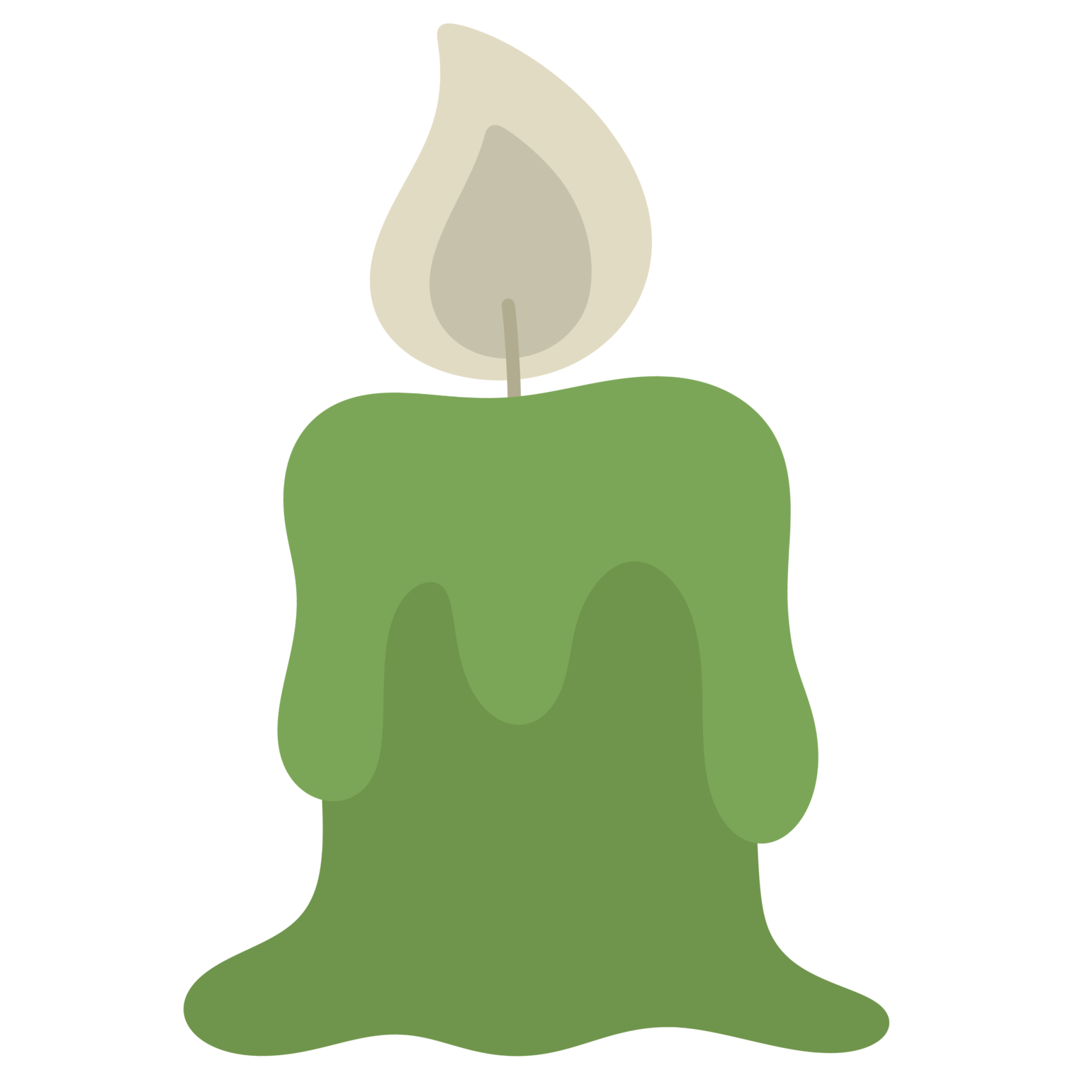
Appreciate the work that I do?
Feel free to leave a tip if you are able.
I am grateful that you are here. 💚
